Some dogs win hearts with their expressive eyes, others with their floppy ears or goofy grins—but have you ever paused to admire the wonder of a dog’s tail? That swishing, wagging, sometimes whip-like appendage is more than just cute—it’s a powerful communicator and, in many breeds, a true spectacle of nature. For those who adore the details, the tail might just be the most charming feature of all.
Dog tails aren’t just for show. These extensions of the spine help pups with balance, serve as social signals, and can even reveal a lot about their mood.
A joyful wag can spark happiness in an instant, while a stiff, upright tail may call for caution. From fluffy plumes to whip-thin curves, tails come in all shapes and lengths—but some breeds take it to another level with tails that stretch to incredible lengths.
So if you’re curious about which breeds proudly flaunt the longest tails in the canine world, you’re in for a treat. Let’s dive into the fascinating world of dog breeds with record-breaking rear-end flair!
Dog Breeds With Longest Tails In The World
1. Irish Wolfhound
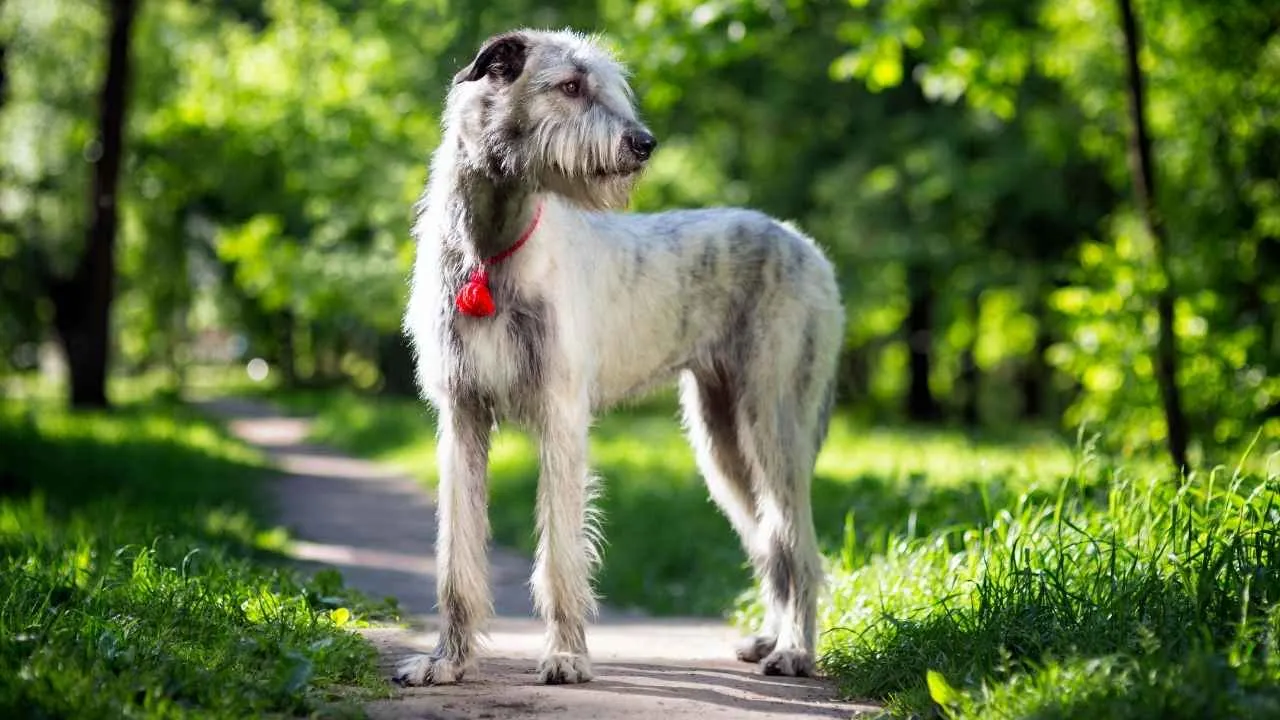
The Irish Wolfhound, often dubbed the gentle giant of the canine world, stands among the tallest dog breeds recognized by the American Kennel Club. Males can tower up to 32 inches at the shoulder and weigh as much as 180 pounds, while females are slightly smaller.
The American Kennel Club (AKC) notes that the breed’s coarse, rugged coat is available in a wide variety of colors, such as white, gray, brindle, red, black, and fawn.
Despite their immense size, these sighthounds possess a calm demeanor and graceful build. Their long, low-set tail with a slight curve is one of their signature traits—and with a record-breaking length of 30.2 inches, it’s no surprise they top the list for the longest tail in the canine world.
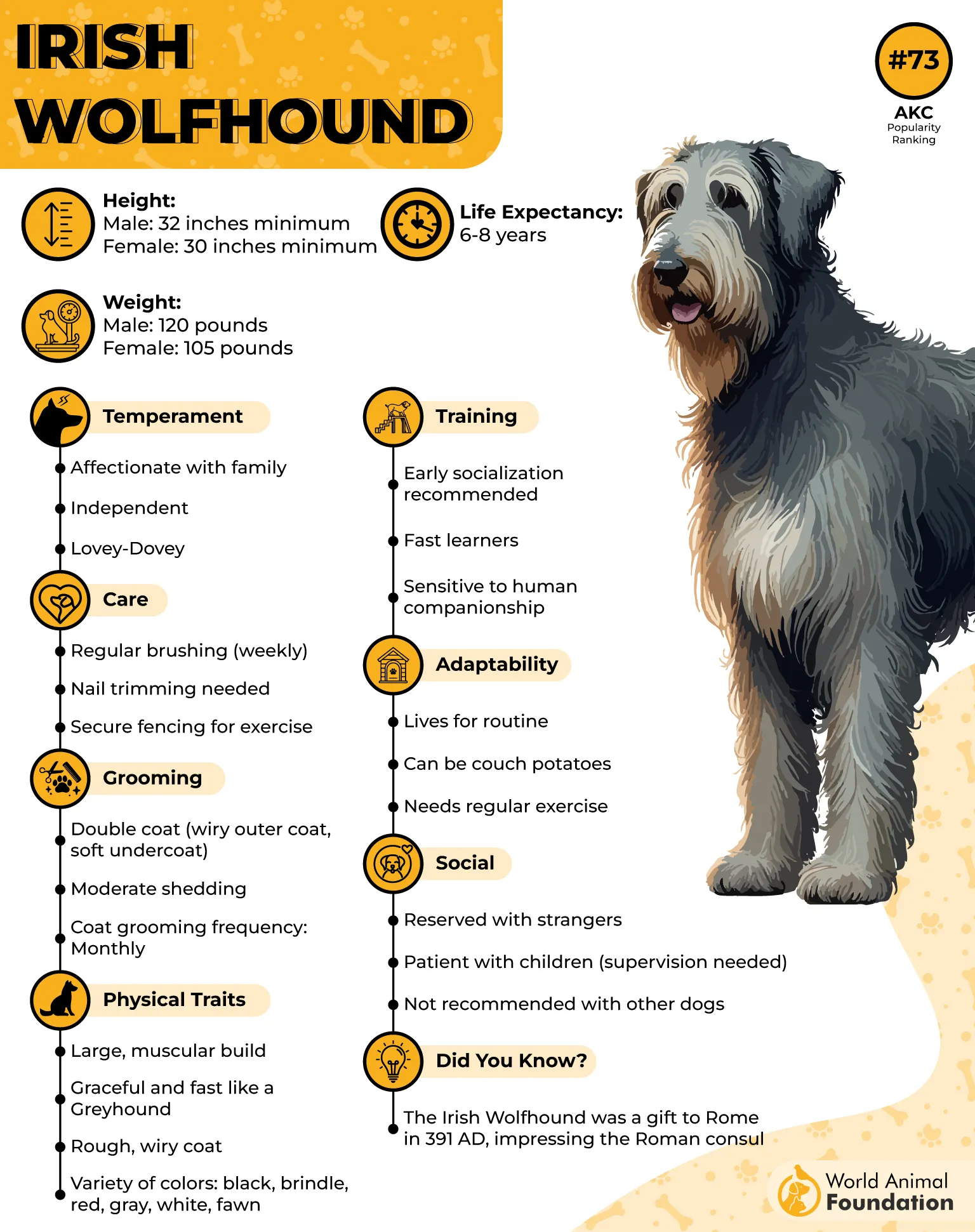
History
Originating in Ireland, these hounds were bred by the ancient Gaels to hunt large game such as boar, elk, and wolves. Referred to as “Cú Faoil” in old Irish, they were prized for both their power and nobility. Roman records dating back to 391 AD mention Irish hounds gifted to Roman consuls, admired for their formidable size.
Though their population declined by the 18th century, they were revived in the 19th century by Captain George Graham, ensuring their legacy endured. Today, they symbolize strength and serenity in one majestic frame.
Fun Fact: Keon, an Irish Wolfhound from Belgium, holds the Guinness World Record for the longest tail ever recorded on a dog—measuring a staggering 30.2 inches.
2. Akita
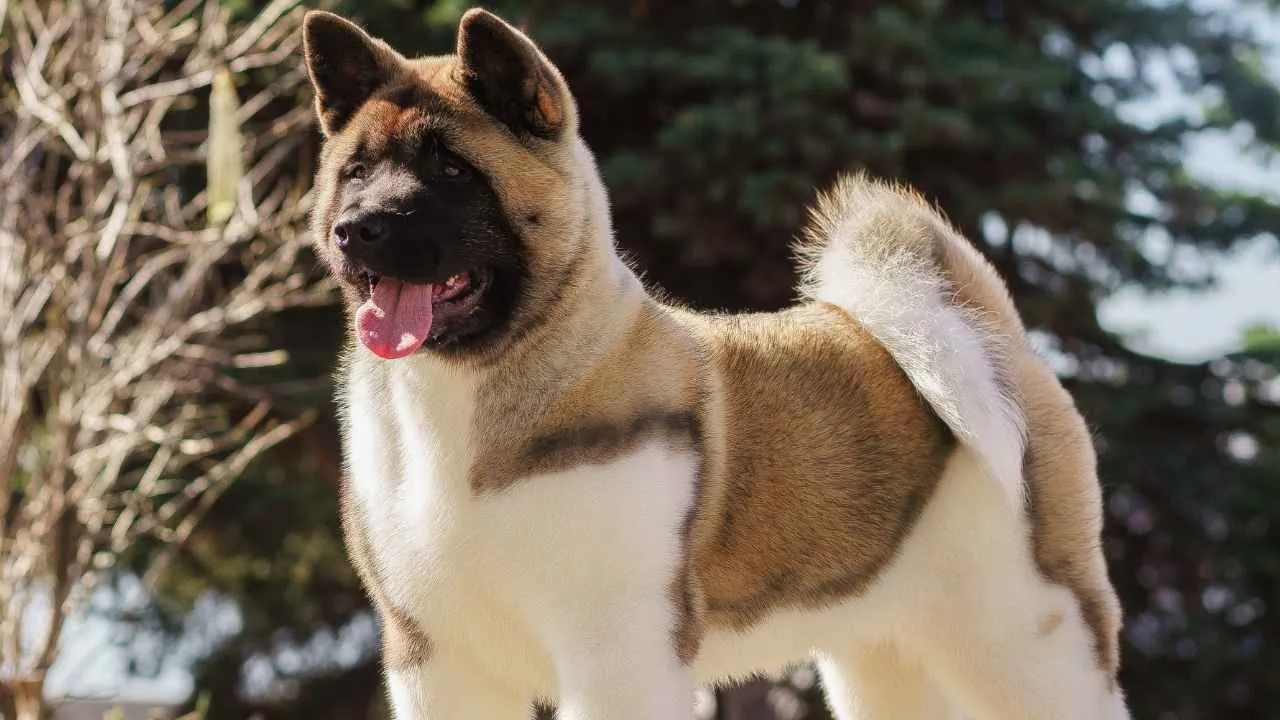
The Akita, also known as Akita Inu or Great Japanese Dog, is a powerful and noble breed from Japan’s mountainous north. Standing 24 to 28 inches tall and weighing between 70 to 130 pounds, this robust spitz-type breed boasts a heavy-boned, muscular frame and a dignified, bear-like head.
The Akita’s hallmark feature is its bushy, curled-over tail—a prominent, full plume that arches gracefully over the back and often flops to one side, subtly concealing its impressive length.
Its double coat comes in various colors including white, brindle, and pinto, with a dense undercoat and coarse outer layer that insulates the breed against harsh climates. PetMD mentions that it is common for families to receive a statue of an Akita dog to celebrate the birth of a new baby or to offer comfort when a loved one is ill.
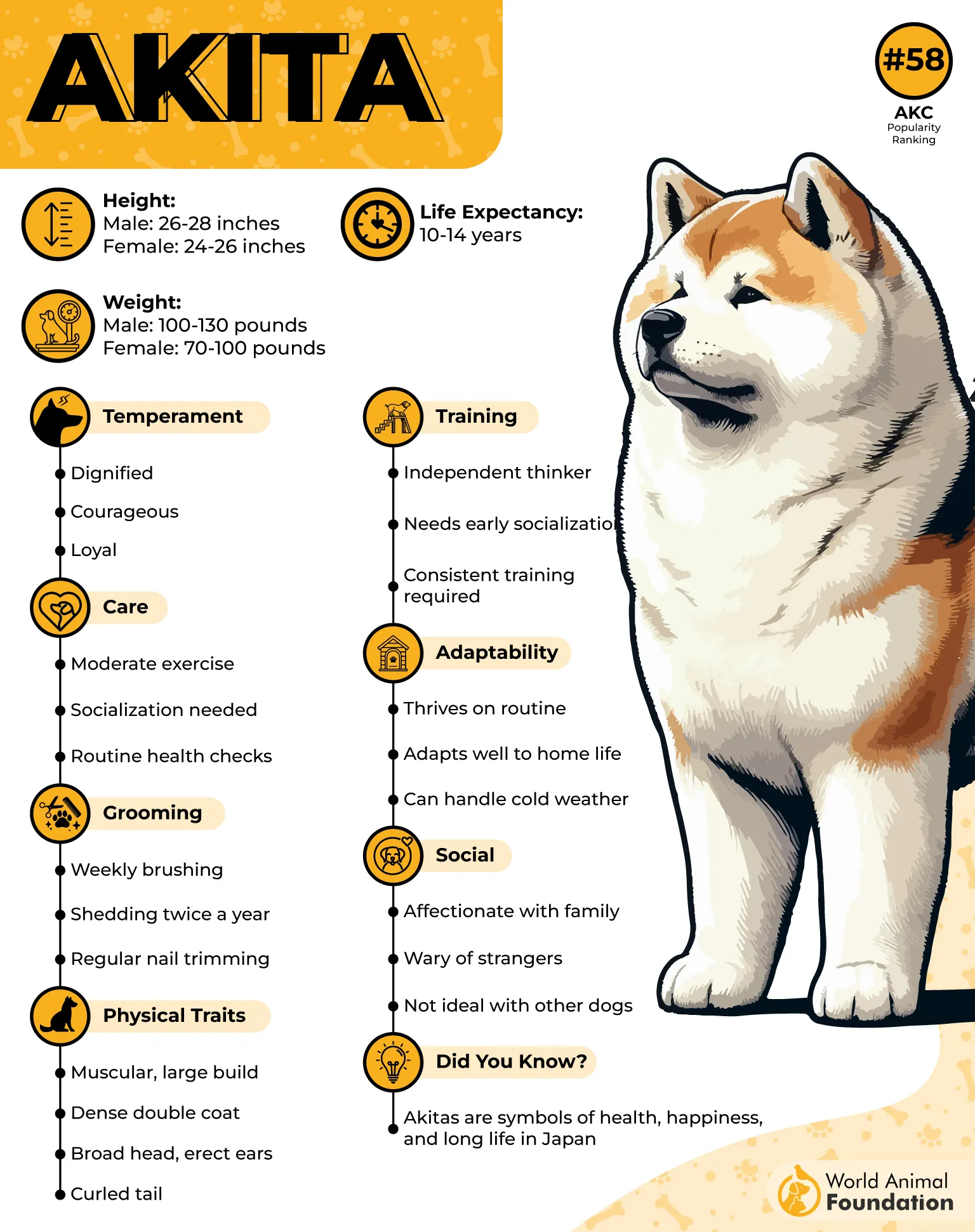
History
Originating in Japan’s Akita prefecture, this breed was traditionally used for hunting large game such as bear and boar. Revered for their loyalty, courage, and protection instincts, Akitas were considered symbols of health and long life.
The breed became internationally known when Helen Keller brought the first Akita to the U.S. in 1937. In their native land, Akitas are deeply woven into folklore and remain national treasures.
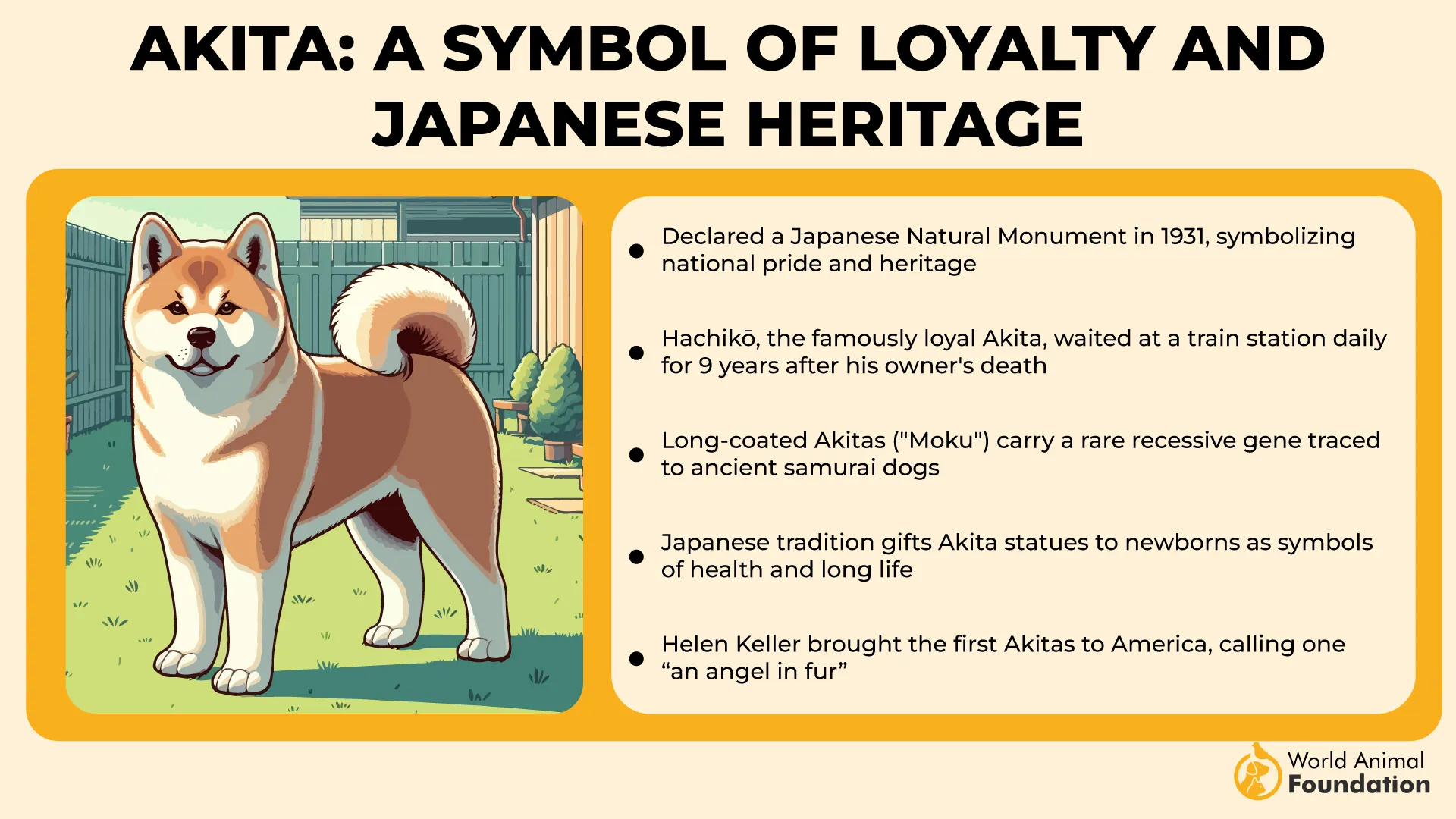
Fun Fact: The Akita’s plush, arching tail isn’t just for looks—it helped shield its face from snow while curled up during cold mountain nights.
3. German Shepherd
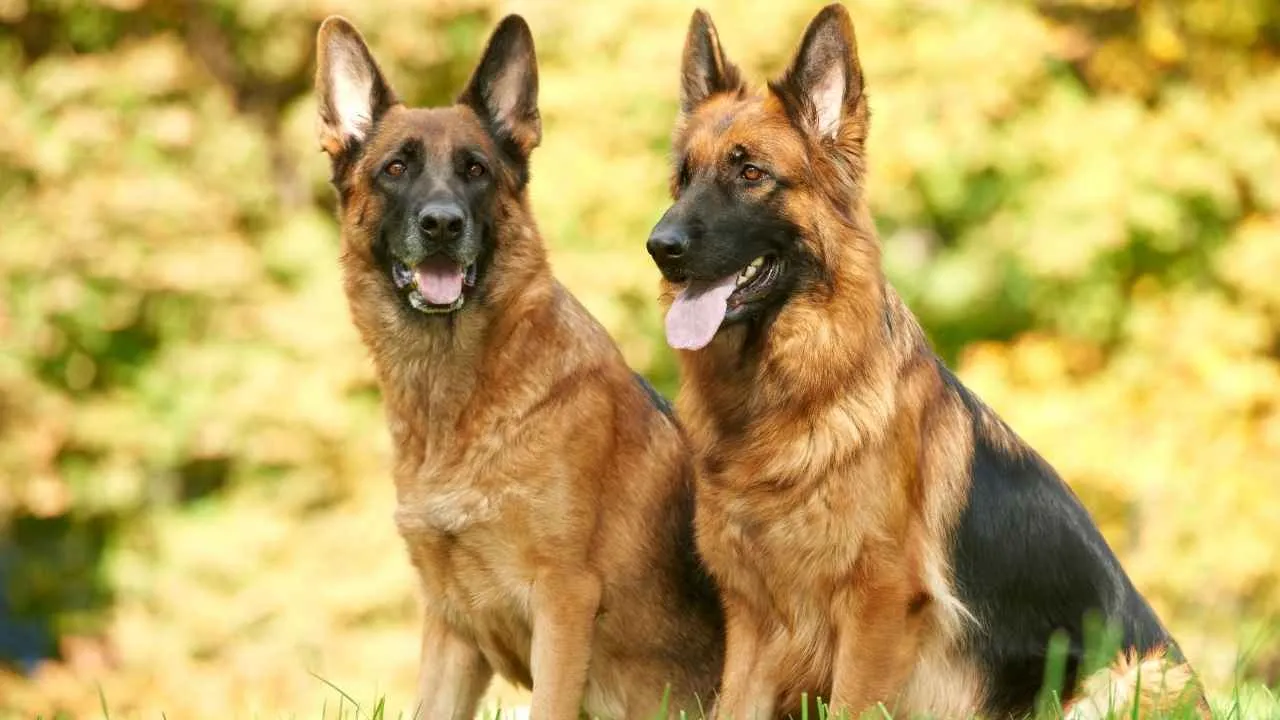
Majestic, agile, and versatile, the German Shepherd is among the world’s most admired breeds—and one with an impressively long, expressive tail. These large working dogs typically stand 22 to 26 inches tall and weigh between 50 to 90 pounds.
Their signature bushy tail is not only long and lush but also a key tool in their body language, often used to signal alertness or submission.
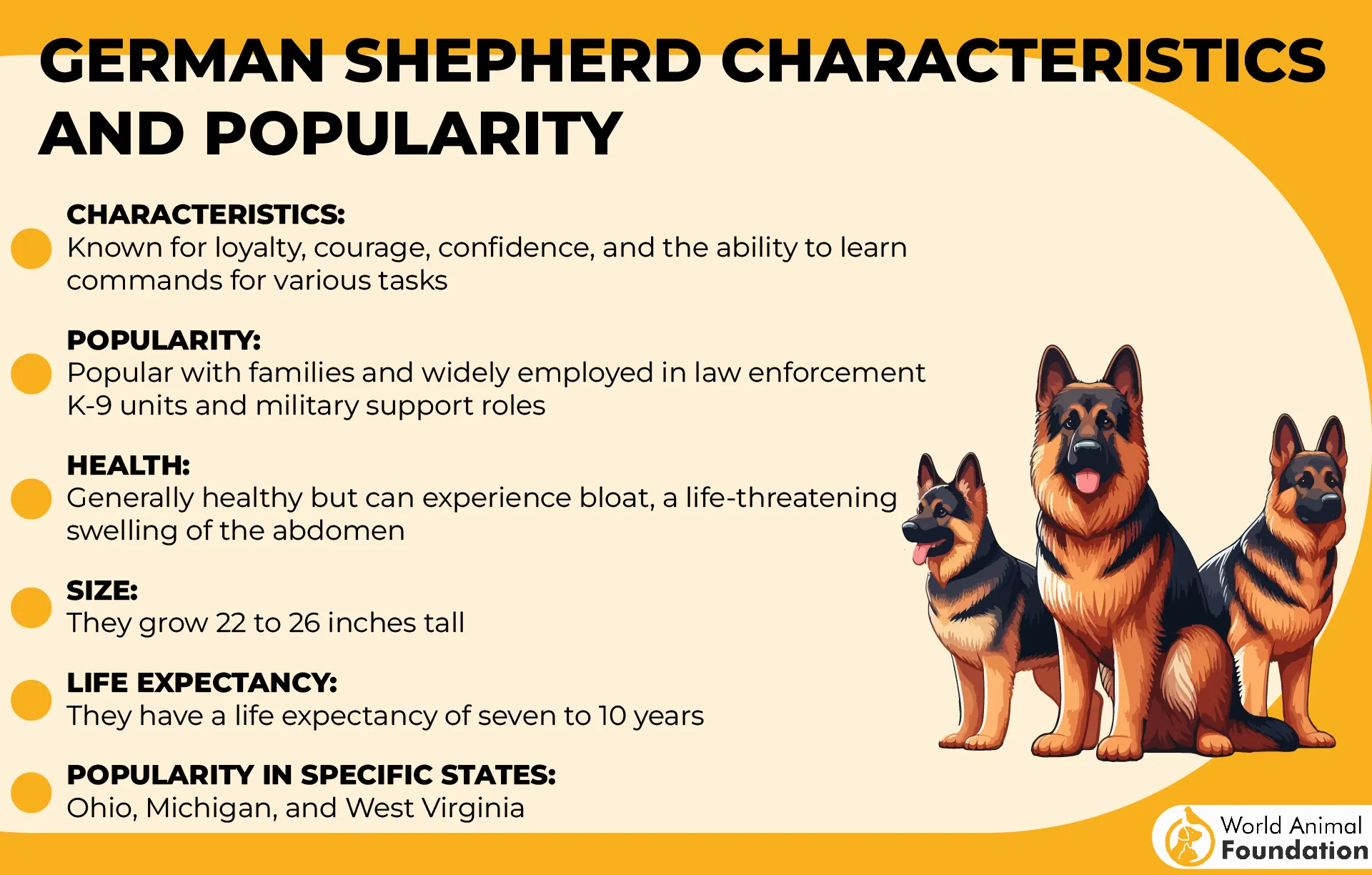
German Shepherds are classified under the herding group and have a life expectancy of 9 to 13 years. Their athletic build, thick double coat, erect ears, and confident stance contribute to their noble appearance. WebMD explains that this breed has proven to be highly effective as a police, guard, and military working dog.
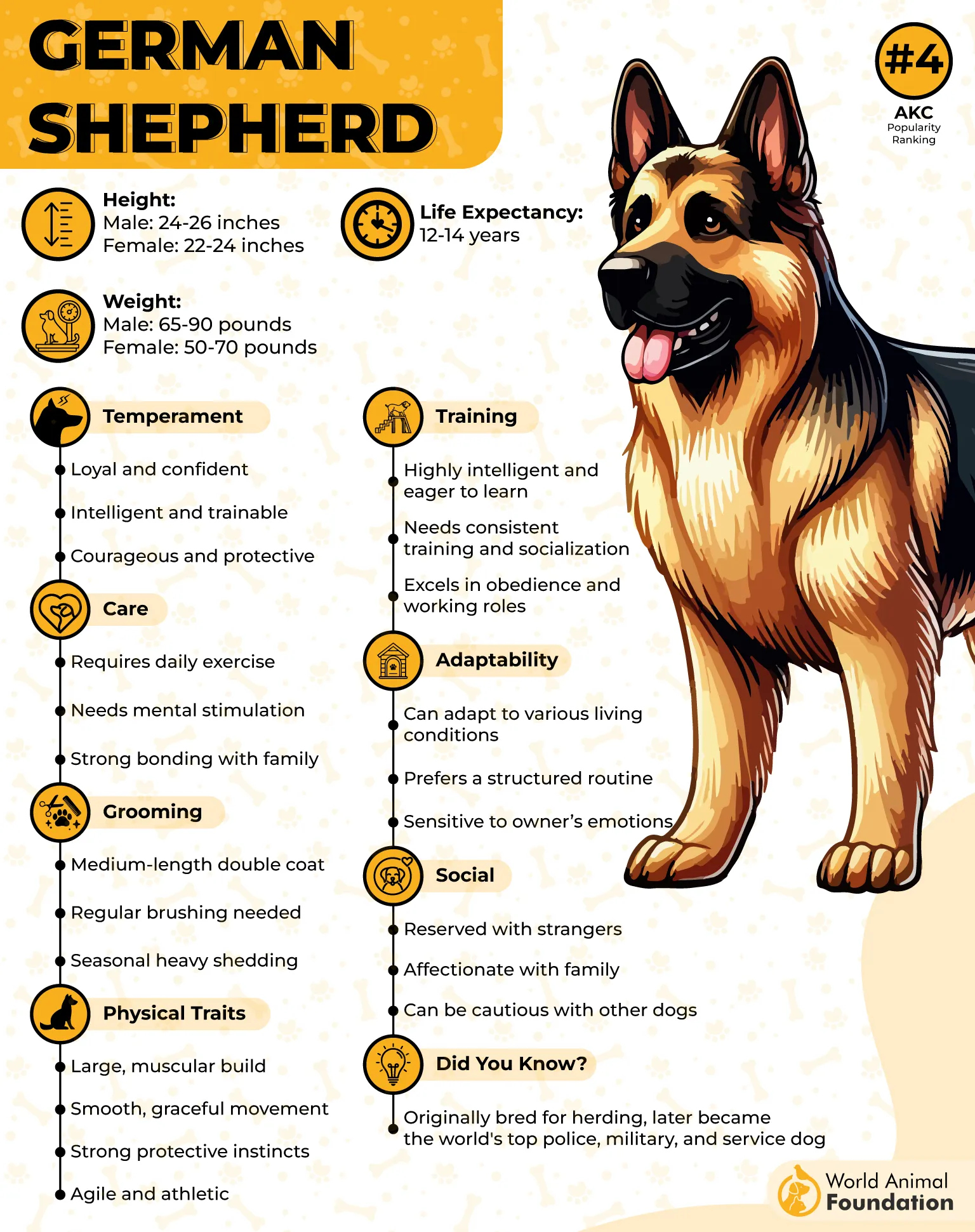
History
The German Shepherd breed originated in Germany in the late 19th century and was originally developed to herd and guard flocks. The breed was standardized by Captain Max von Stephanitz, who sought to create the ideal herding dog.
German Shepherds quickly became known for their intelligence and versatility and began serving in military and police roles. Over time, they became one of the most popular breeds worldwide, prized for their loyalty, courage, and trainability.
Fun Fact: German Shepherds have saber-shaped tails that contribute to their distinctive silhouette and help with balance during high-speed pursuits and sharp turns.
4. Irish Setter
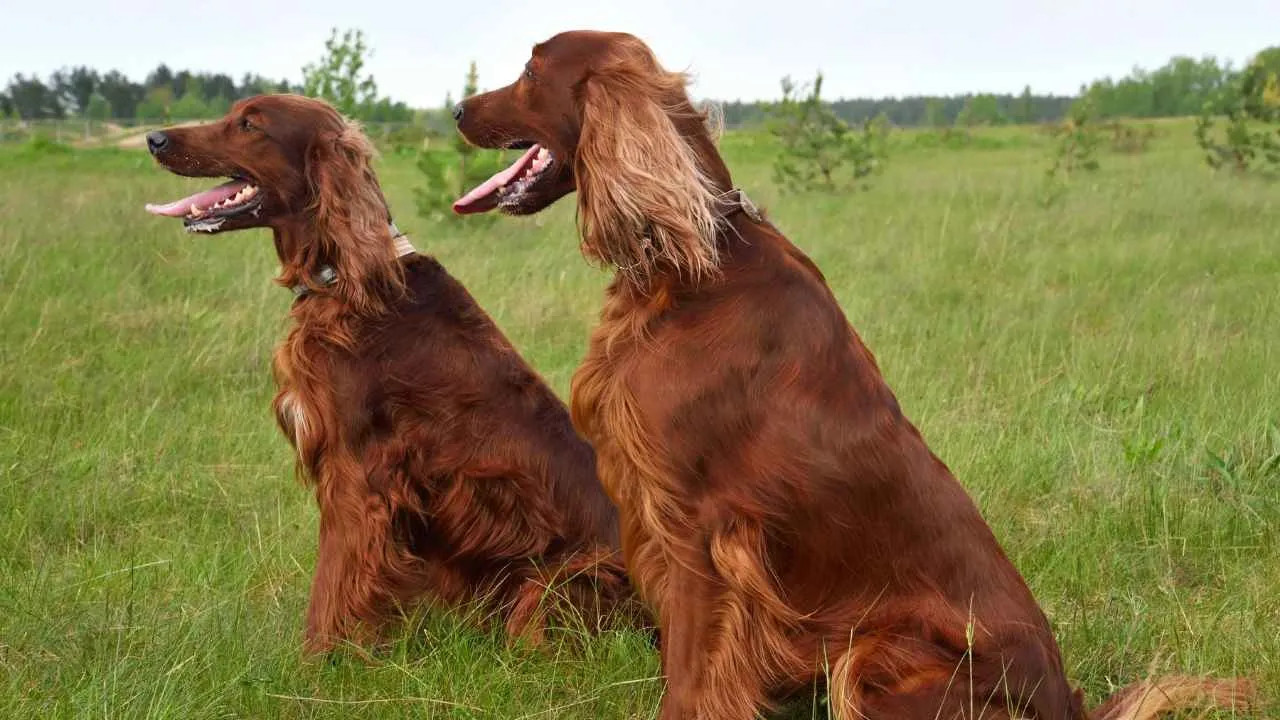
The Irish Setter, also known as the Red Setter, is a stunning breed celebrated for its elegant build, high spirits, and signature mahogany coat. This graceful sporting dog stands around 25–27 inches tall and typically weighs between 60 to 70 pounds.
Known for their feathered tails that taper to a fine point, Irish Setters carry their long tails either level with or slightly below their back—ideal for signaling game birds during hunts. Their sleek, flowing tail complements their athletic frame, helping them stand out in both appearance and field performance.
A member of the sporting group, these dogs live 12 to 15 years and are as charming in personality as they are in looks.
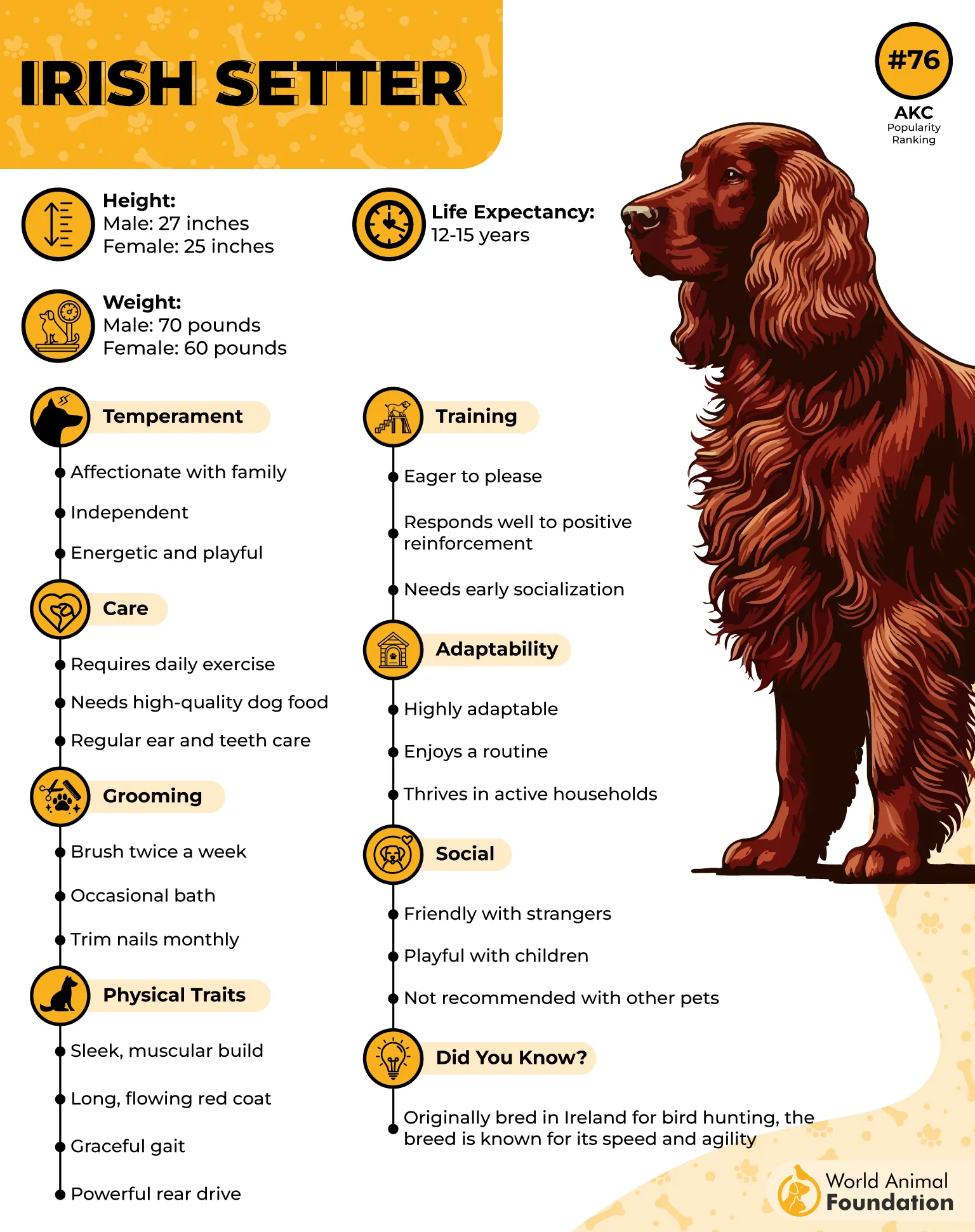
History
The Irish Setter’s lineage dates to 18th-century Ireland, where it was developed from a mix of English and Gordon Setters, spaniels, and pointers. Bred to “set” or crouch when birds were located, the breed’s vivid coat and alert tail made it easier for hunters to spot.
Once used with nets before firearms became widespread, Irish Setters later gained recognition as both exceptional hunting companions and loving family dogs. One even lived in the White House—President Nixon’s beloved Setter, King Timahoe, elevated the breed’s popularity in the 1970s.
Fun Fact: The Irish Setter’s long, feathered tail isn’t just beautiful—it plays a key role in fieldwork, pointing and signaling game effectively.
5. Leonberger
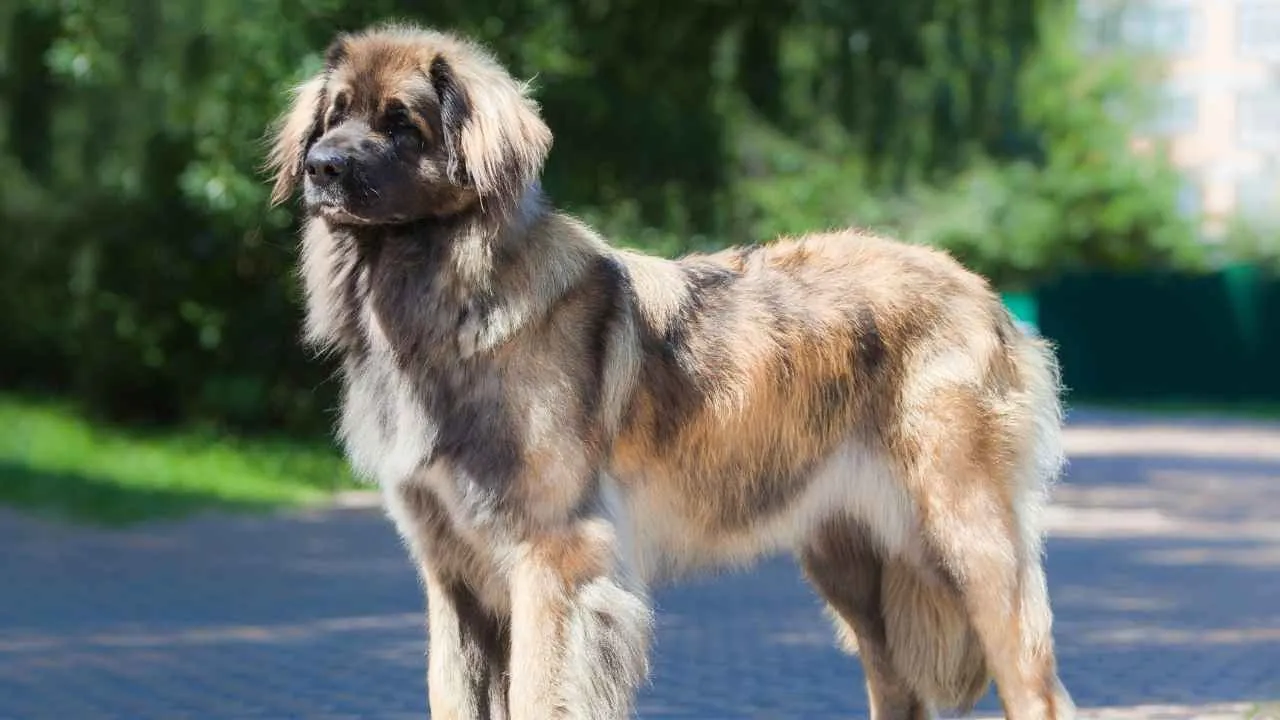
The Leonberger is a striking, lion-like giant breed originally developed in Leonberg, Germany. Males typically stand between 28 to 31.5 inches tall and weigh up to 170 pounds, while females are slightly smaller.
Their double coat is long, waterproof, and varies from golden to reddish-brown with black highlights and a distinctive dark facial mask. Known for their massive frame, kind eyes, and grand mane, especially around the neck and chest, Leonbergers also boast a long, flowing tail that complements their majestic appearance.
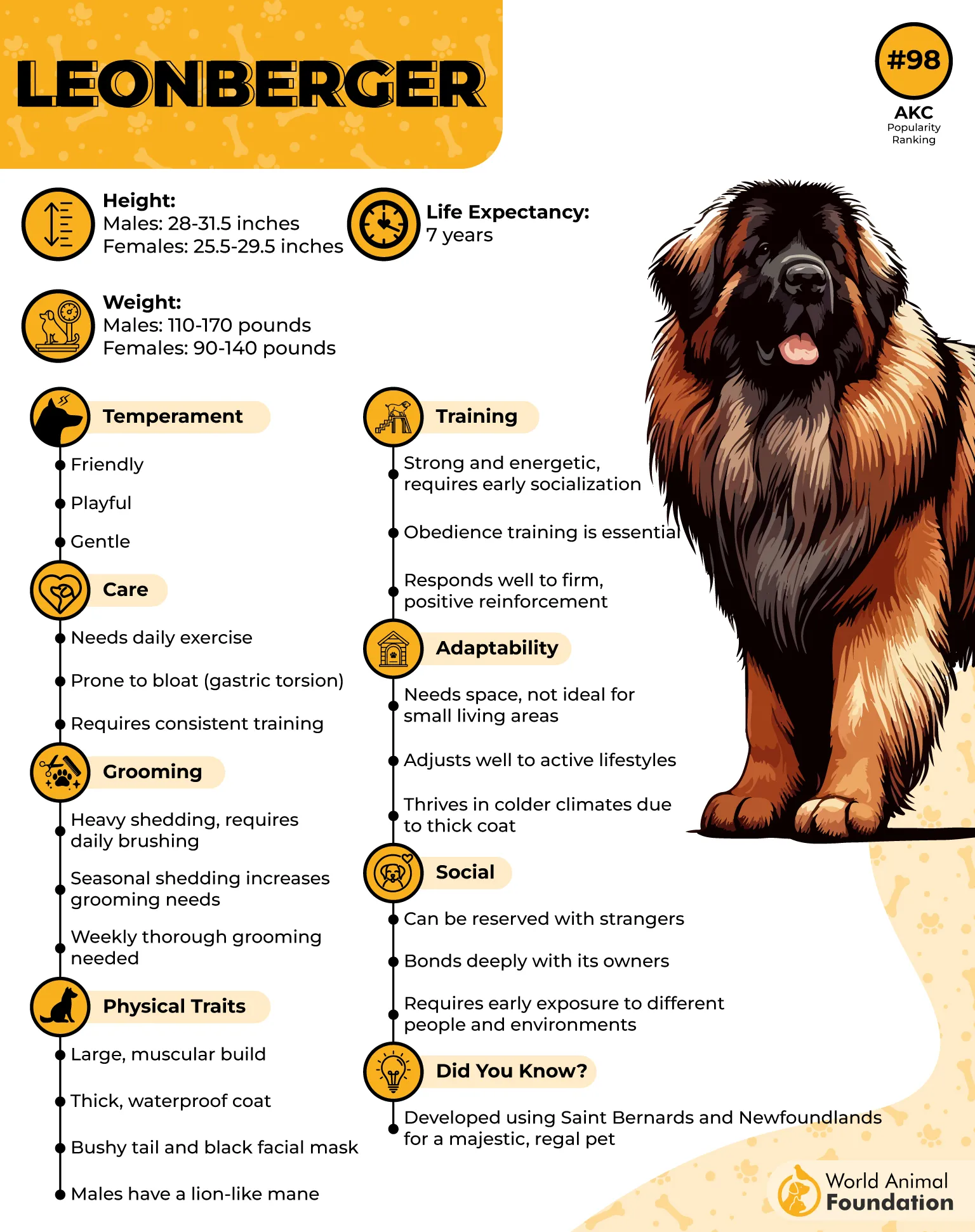
History
The breed was created in the 19th century by Heinrich Essig, a town councilor of Leonberg, with the goal of developing a dog resembling the lion featured on the town’s crest.
Initially intended as a symbol of prestige for European royalty, Leonbergers later proved their utility as hardworking dogs—pulling carts, herding livestock, and serving as loyal companions on farms. Despite their size and strength, they’re known for their even temperament and gentle nature, making them beloved family pets.
Fun Fact: The Leonberger’s tail isn’t just for looks—its impressive length and plush texture are an integral part of the breed’s regal, lion-like image..
6. Whippet
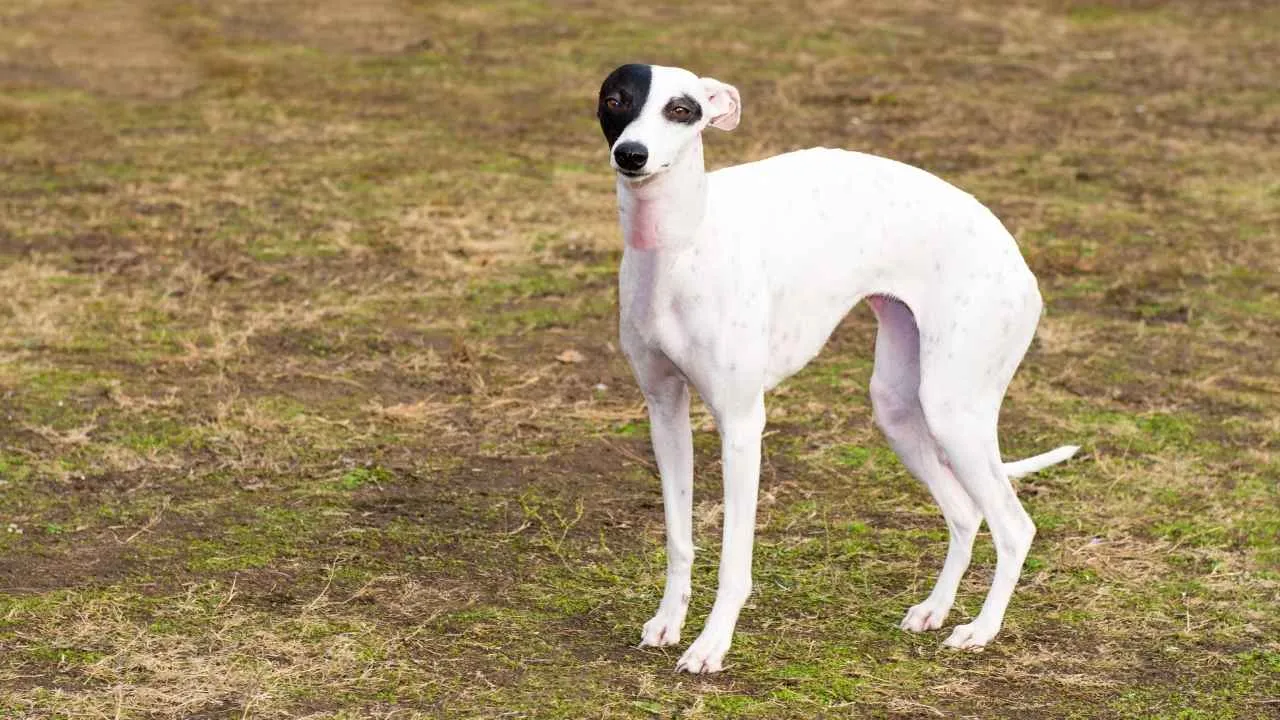
The Whippet, affectionately known as the “Poor Man’s Racehorse,” is a graceful, medium-sized sighthound famed for its speed and elegance. Standing between 18 to 22 inches tall and weighing around 25 to 40 pounds, this breed is a smaller cousin of the Greyhound, combining athleticism with gentle charm.
Whippets have long, whip-like tails that curve subtly and hang low, especially when they’re at rest—adding to their signature streamlined silhouette. Though not particularly known for wagging their tails often, these tails act as rudders during high-speed chases, helping maintain balance and control.
Whippets belong to the Hound group and have a life expectancy of 12 to 15 years. With their smooth, short coat and minimal grooming needs, they’re as low-maintenance as they are affectionate.
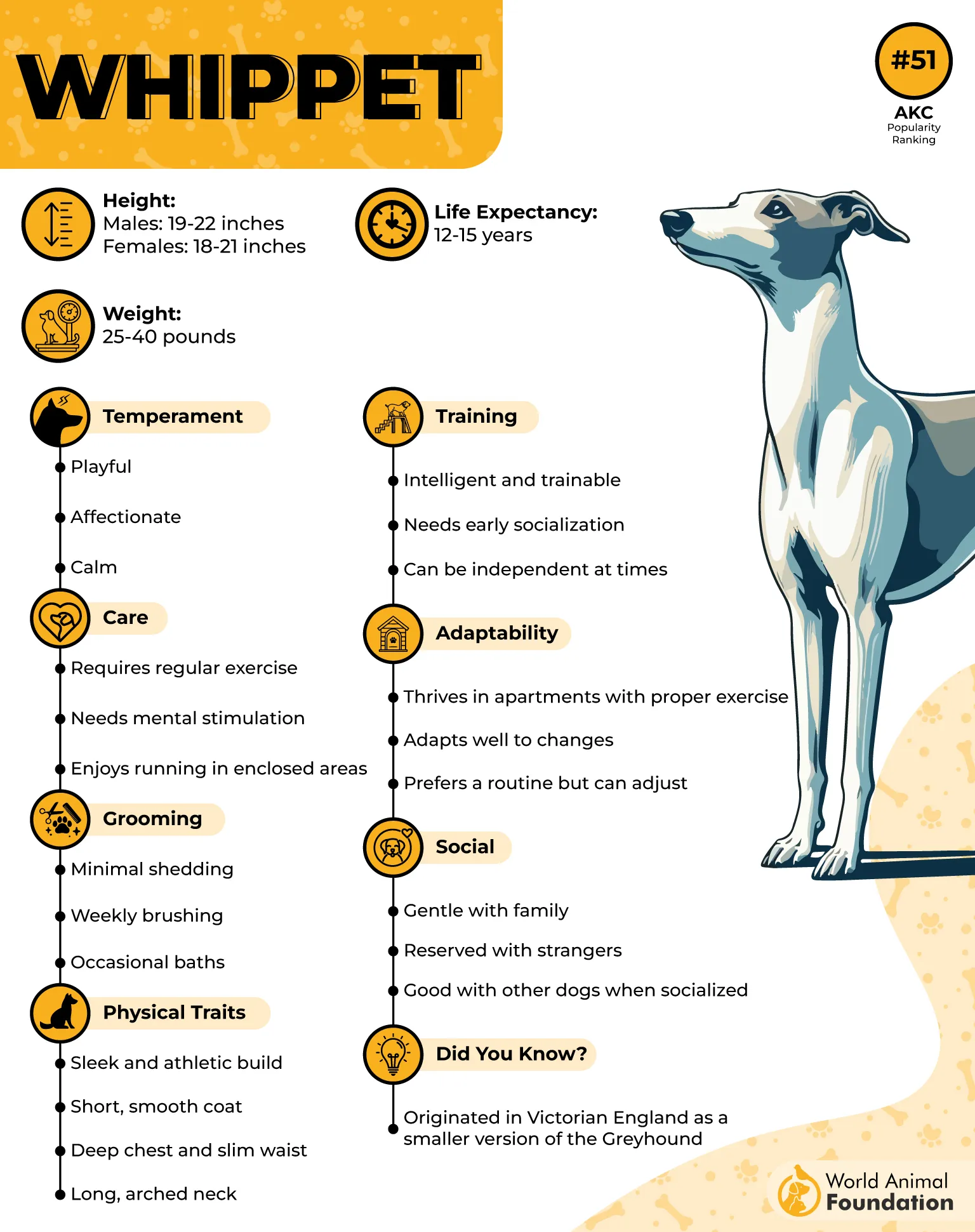
History
Developed in England during the 18th and 19th centuries, Whippets were bred primarily for rabbit coursing and later became popular racing dogs. They emerged as a cost-effective alternative for working-class families who couldn’t afford Greyhounds.
Whippets quickly gained popularity in dog sports due to their remarkable speed, agility, and stamina. Their distinctive long tails not only serve a practical purpose in their sprinting careers but also lend the breed its characteristic appearance.
Fact: Whippets tend to keep their tails tucked and rarely wag unless something truly excites them.
7. St. Bernard
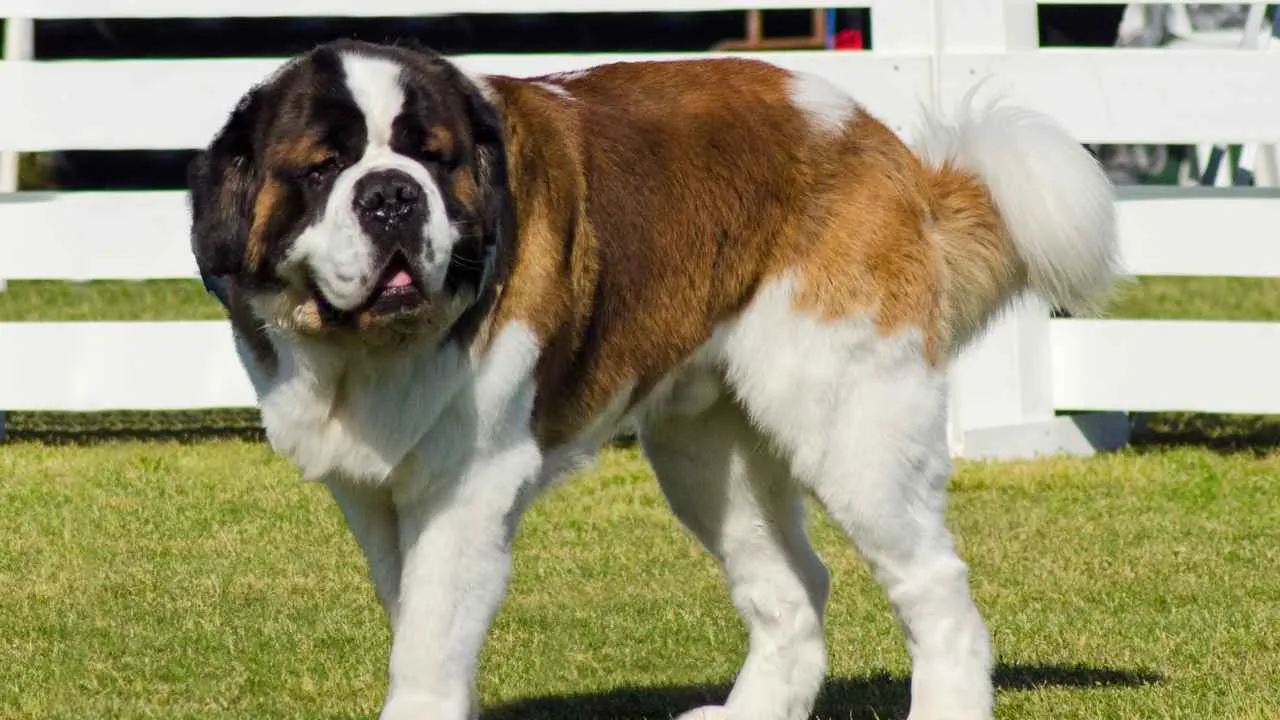
Towering and gentle, the St. Bernard is one of the most iconic giant dog breeds, easily recognized by its massive build, soulful expression, and famously long tail. Males typically reach heights of at least 27.5 inches and weigh between 140 to 180 pounds.
This working group member boasts a dense coat in red-brown and white, with either short or medium-length fur. The large, expressive head, wrinkled brow, and thick, sweeping tail—often held low or parallel to the back—complete the breed’s majestic look. These patient giants have earned a reputation for being affectionate with children and dependable around family.
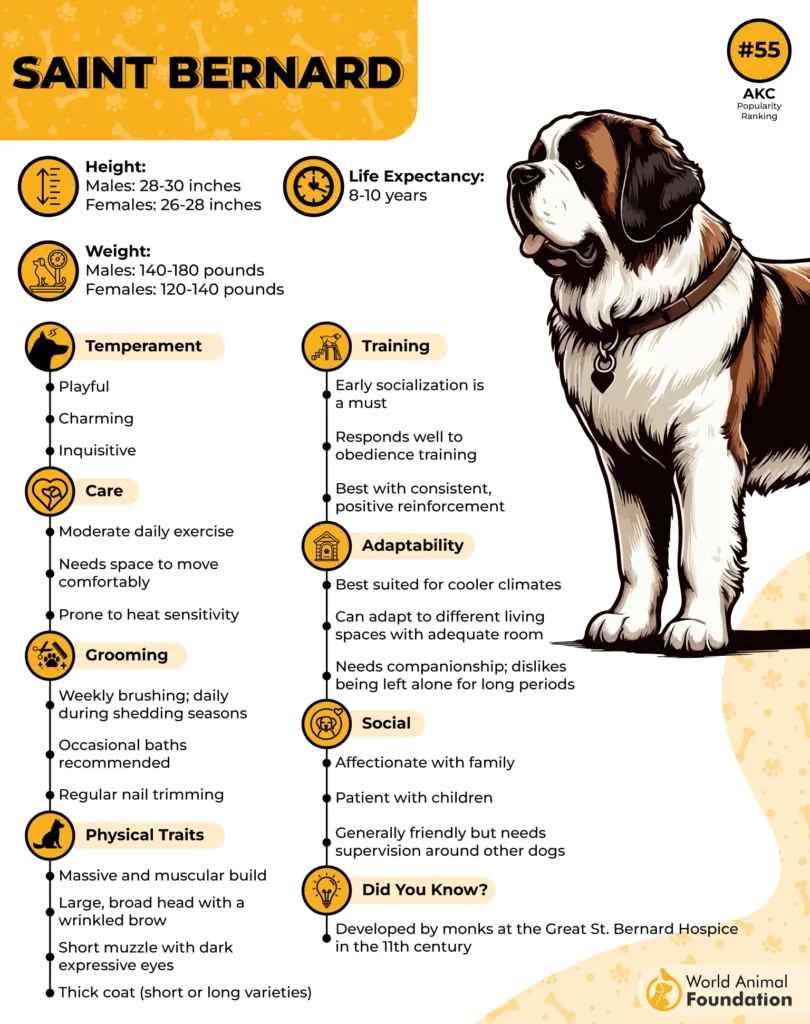
History
The origins of the St. Bernard trace back to the snowy Swiss Alps. Monks at the Great St. Bernard Hospice began using these dogs in the 1700s to assist lost or injured travelers crossing treacherous mountain passes. Their strength, keen sense of smell, and natural directional ability made them ideal for alpine search and rescue.
Historically referred to as Alpine Spaniels, early records and artwork dating as far back as 1707 describe their lifesaving feats. Today’s St. Bernard is a descendant of those early dogs, preserved and revitalized by 19th-century breeders, including Captain George Augustus Graham, who helped standardize the breed.
Fun fact: The St. Bernard shares the record for the heaviest dog breed, often topping out at 200 pounds.
8. Siberian Husky
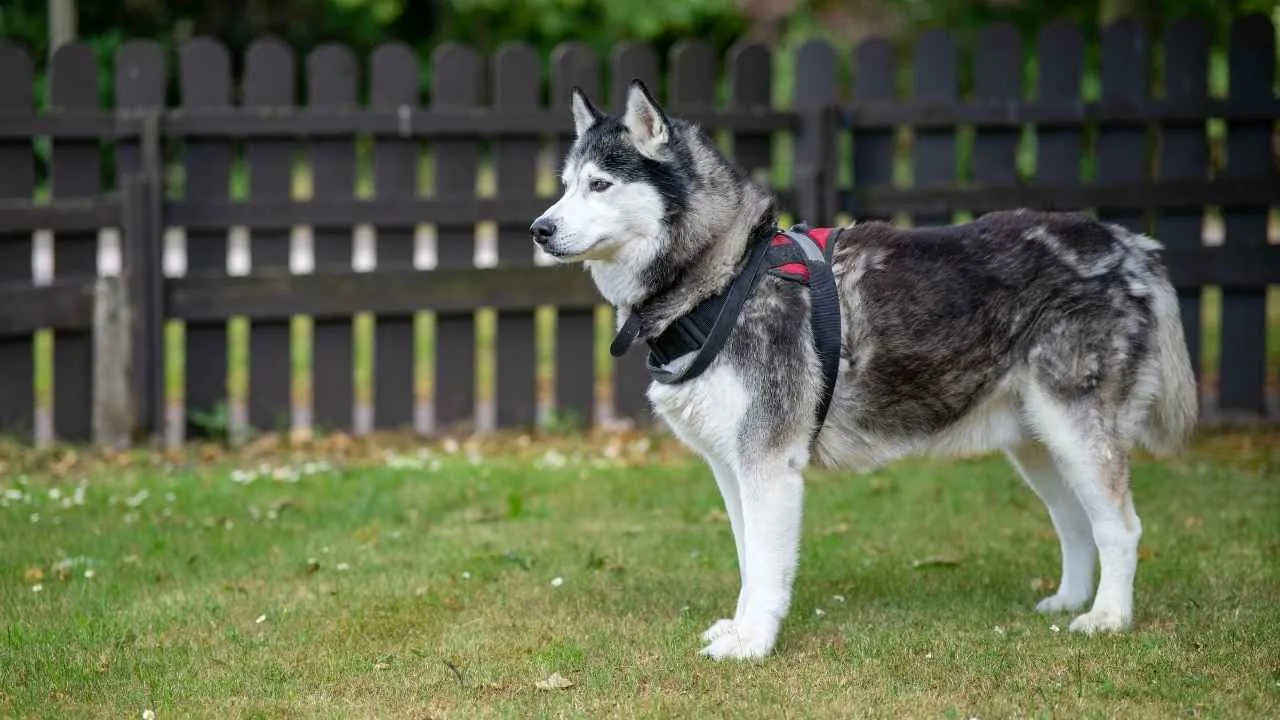
The Siberian Husky, known for its sled-pulling prowess, hails from Northeast Asia where it was bred by the Chukchi people to thrive in subzero climates.
As a medium-sized breed, males typically reach 21 to 23.5 inches in height and weigh 45 to 60 pounds, while females are slightly smaller. These energetic canines belong to the working group and boast a life expectancy of 12 to 14 years.
Huskies are admired for their striking almond-shaped eyes—often blue, brown, or heterochromatic—and erect ears that highlight their alert expression. Their dense double coat, available in various colors from black to pure white, insulates them against the cold.
A standout feature is their long, bushy, sickle-shaped tail, which not only adds to their wolf-like elegance but also serves a functional purpose—curling over their noses for warmth while sleeping.
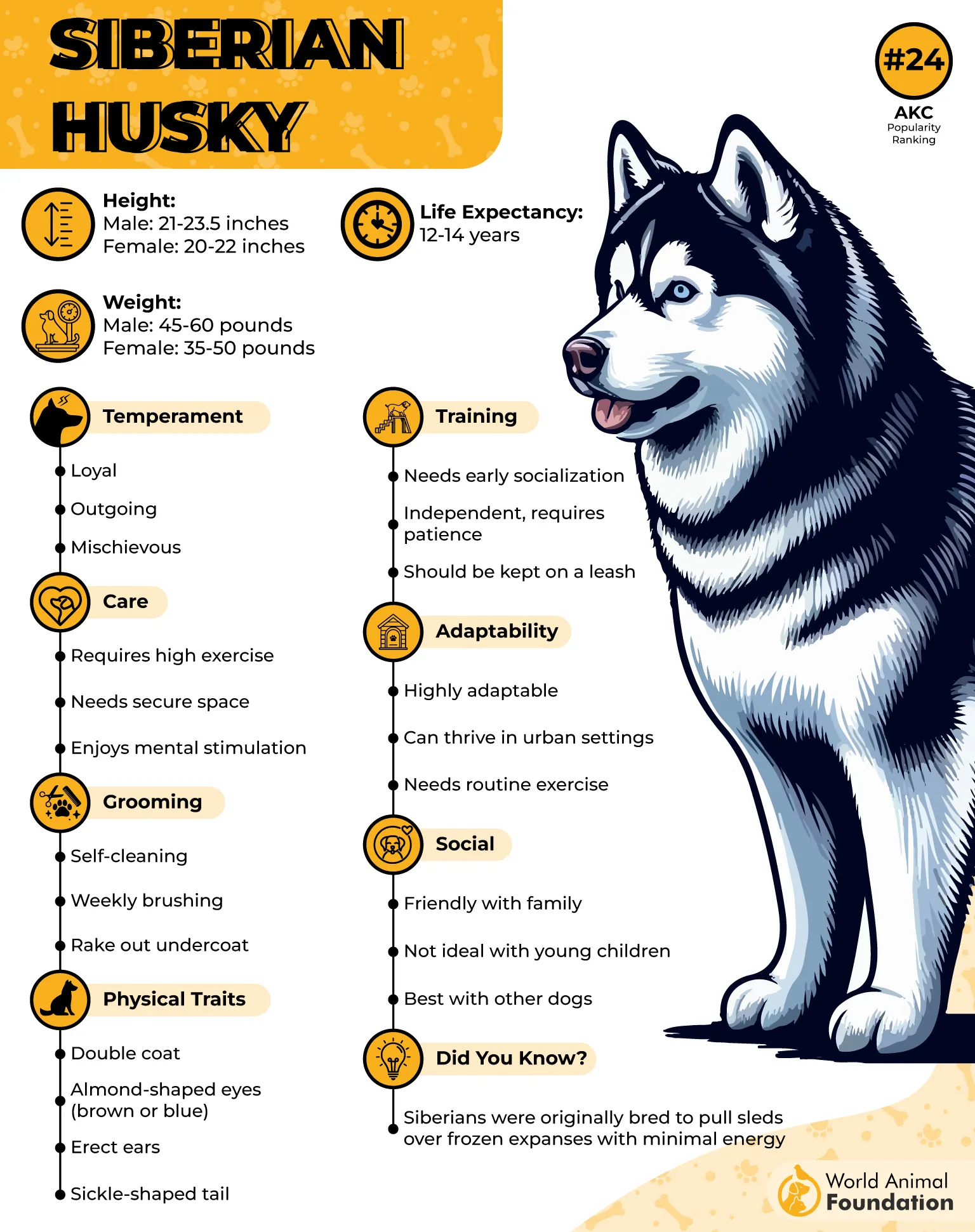
History
Originally bred by the Chukchi people, Siberian Huskies were designed for endurance and teamwork, pulling sleds across frozen terrains. Their journey to the U.S. began in 1908, where they earned fame as racing dogs and indispensable workers in Alaska.
Fun fact: Siberian Huskies use their tails like scarves, wrapping them around their faces to stay warm in icy temperatures.
9. Chihuahua
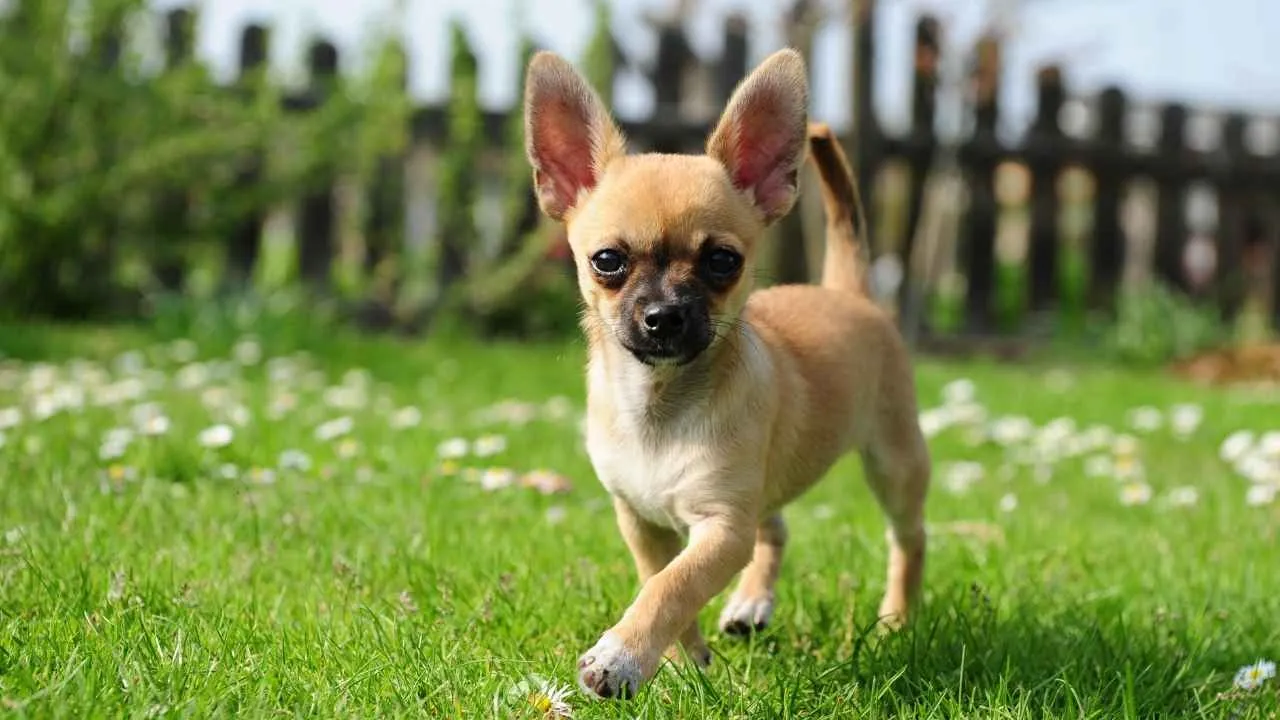
Despite being the smallest dog breed in the world, the Chihuahua surprises many with its remarkably long, curved tail—a feature especially prominent in the long-haired variety. This tiny yet confident breed stands about 5 to 8 inches tall and typically weighs no more than 6 pounds.
Their large, expressive eyes, apple-shaped heads, and alert ears give them a distinct charm. Recognized by the American Kennel Club in the toy group, Chihuahuas boast a life expectancy of 14 to 17 years and are popular for their vibrant personalities packed into compact frames. Coats may be smooth or long, and come in virtually every color and pattern combination imaginable.
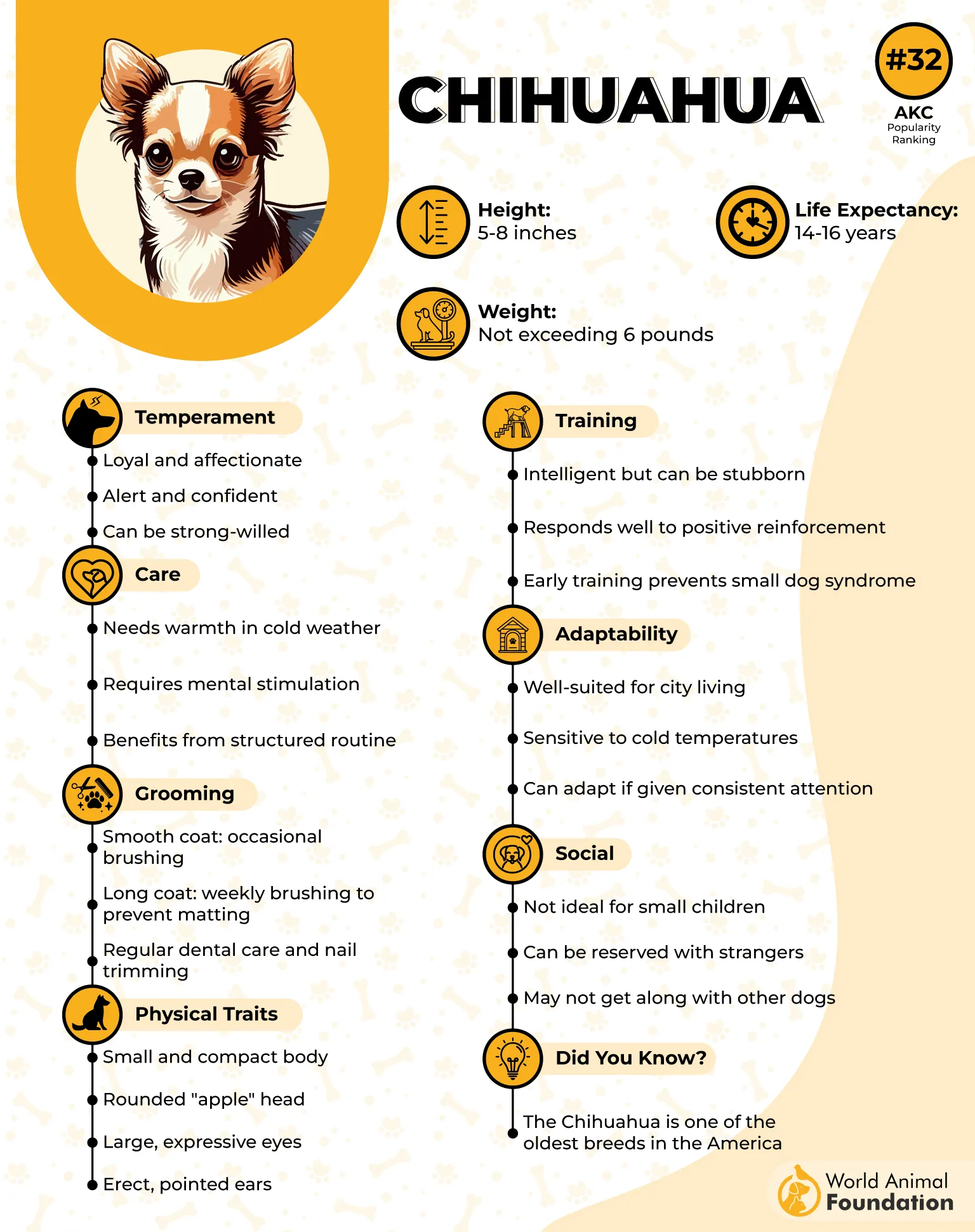
History
Named after the Mexican state of Chihuahua, this breed’s origins remain a subject of debate. While many agree they hail from Mexico, some historians suggest Chihuahuas may have been brought over from Malta by Spanish conquistadors or even originated in China.
The breed is thought to descend from the Techichi, a companion dog of the ancient Toltec civilization. Over time, they gained recognition as loyal, feisty companions in Mexican culture and beyond.
Fact: Long-haired Chihuahuas may appear to have bigger tails than their short-haired counterparts—but it’s all fur, not extra length.
10. Samoyed
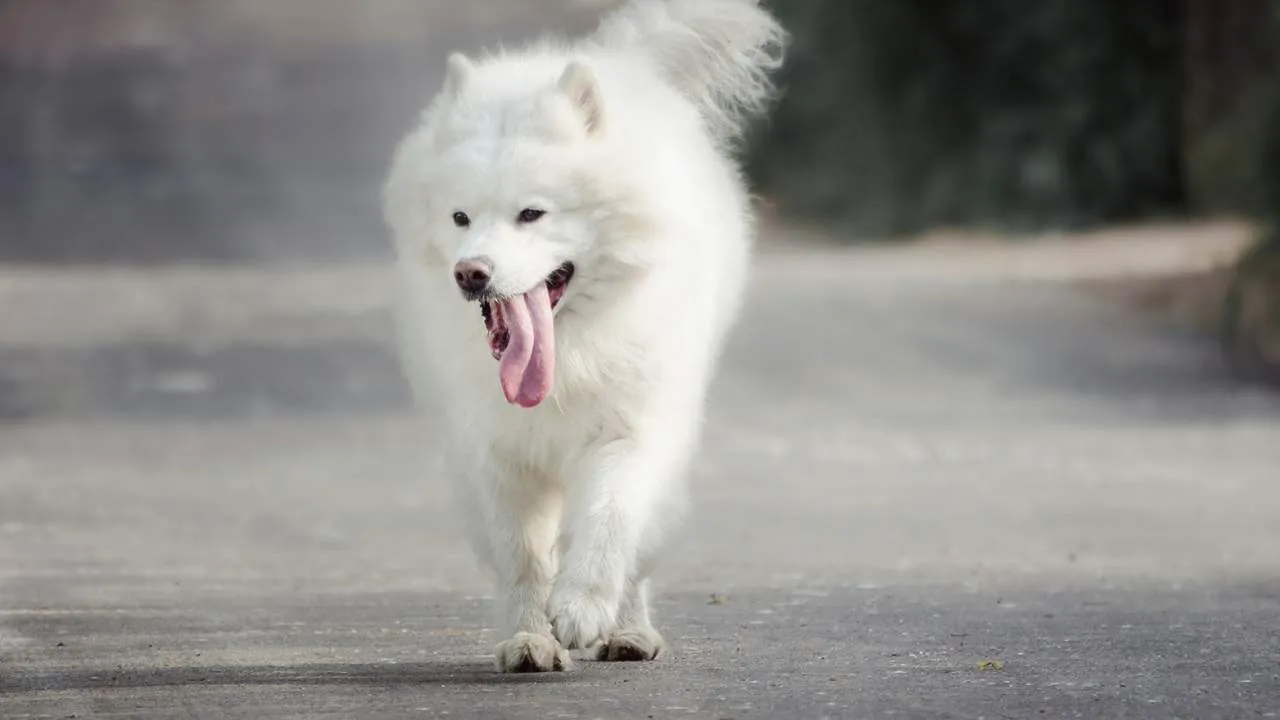
The Samoyed, also called the “smiling sled dog,” is a stunning Nordic breed known for its snowy white coat and luxurious tail that curls gracefully over its back. These medium-to-large working dogs typically stand between 19 and 23.5 inches tall and weigh 35 to 65 pounds.
Their plush tails are not just long but richly feathered, often resting against one side of their body in a distinctive curl. This feature, combined with their expressive face and thick fur, makes them among the most visually striking long-tailed breeds.
Belonging to the Working Group, Samoyeds enjoy a lifespan of 12 to 14 years and are admired for their endurance and strength in freezing climates.
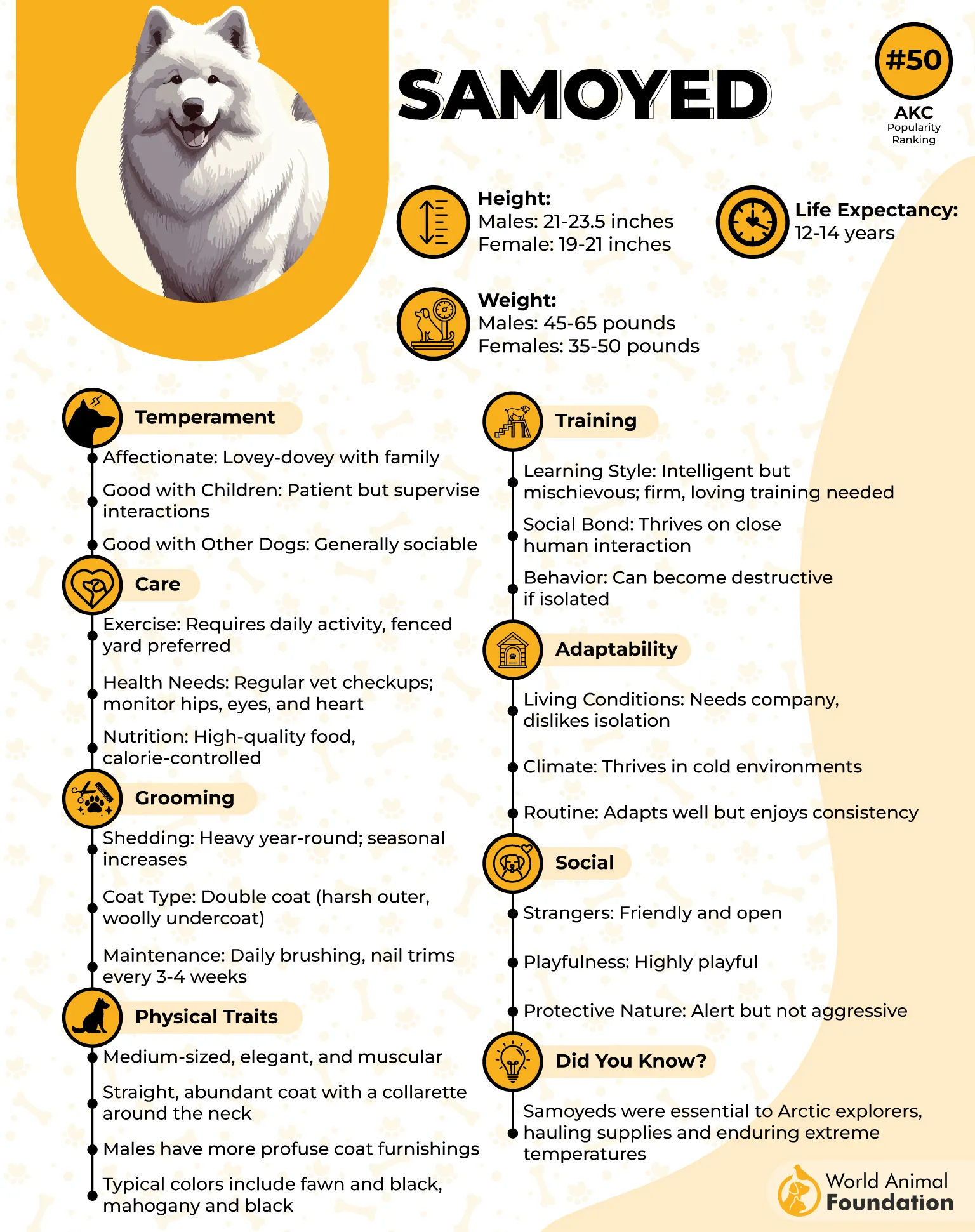
History
Dating back to at least 1000 BCE, the Samoyed has its roots in Siberia, where the Samoyedic people bred them to herd reindeer, pull sledges, and survive brutal Arctic winters. Their white coats evolved to provide camouflage and insulation in snow-covered tundras.
For generations, these dogs slept alongside their humans to provide warmth. Their trademark smile—an upturned mouth—was not just charming but functional, helping prevent drool and icicles in subzero temperatures.
Fun fact: The Samoyed’s thick tail, often described as plume-like, serves as a natural face-warmer when they curl up in the snow.
Conclusion
From majestic curves to feathered finishes, the longest dog tail often reflects a breed’s history, climate, and purpose. Breeds like the Irish Wolfhound and Samoyed demonstrate how tail length can be both functional and iconic—used for balance, communication, or even warmth in cold climates. Whether it’s the plume-like tail of a Samoyed curled gracefully over its back, or the low-hanging, sweeping tail of a Wolfhound, these appendages are more than just adorable accessories.
While some other dogs are known for their short tails, many with a thick coat also boast tails as fluffy as they are long. Some of these traits are seen in cold-weather breeds like the Alaskan Malamute. Rare genetic quirks even produce dogs with two tails, though that’s more myth than mainstream. Whether you’re admiring a dog for its silhouette or learning how form follows function, tails tell a story all their own—revealing the elegance, strength, and heritage of these remarkable canines.


